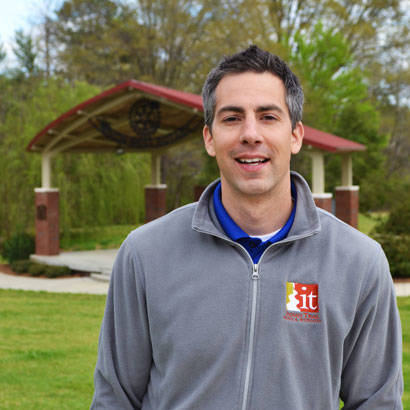
At a very early age, Jay Tryon had a deep affinity for parks and outdoor play. In fact, he grew up just three houses away from a park that offered a summer program he attended every day. “The program consisted of a big red box full of games, arts and crafts supplies, and sports equipment, along with counselors available from 9 to 5,” recalls Tryon. “It was something I looked forward to growing up, and I can say it impacted me as a child.”
Tryon earned a bachelor’s in recreation and leisure studies from State University of New York College - Brockport, and in June 2015, was named director of parks & recreation for the Town of Indian Trail in North Carolina.
Parks & Recreation magazine caught up with Tryon to learn more about his career in parks and recreation, overcoming self-doubt, and the qualities he believes are vital to being an effective director.
Parks & Recreation: What first drew you to parks and recreation?
Jay Tryon: I’ve had several people through the years who had a tremendous impact on my life, and I wanted to make that same difference for others. Many of these folks worked in some sort of a recreation-type job, and I knew I wanted to be around kids and families whom I could impact. Once I entered college and learned of the opportunities, it was an easy decision to pursue this as a career.
P&R: Going in, what did you think would be the most challenging aspect of being a leader in this field?
Tryon: My most challenging thought was being able to prove that I was capable of doing the job, even though I was a young professional given a leadership position. I remember my first week on the job and having to make a significant change to a park we were building. We had about six people in a conference room, and our town manager asked me what we had to do to fix the problem. We made the change and from that moment, I trusted my background and knowledge. I have been very fortunate to have many mentors who have always been there for me if I need them. That is one thing I love so much about our community of professionals.
P&R: Outside of funding, what do you see as some potentially major challenges for park & recreation leadership in the near future?
Tryon: One of the challenges we face regularly is finding that balance of programming and offerings for all ages. We try our best to provide a service to everyone but seem to fall short with some age groups. Our biggest struggle is reaching that 12–17 age group, and we haven’t been able to find that right mix of programming to draw them in. That group is using more screen time and not getting outdoors as much as we would hope. We’re limited with the type of programming we can offer because we don’t have a rec center or indoor community space right now. However, we will be building a community center in the future. We’re actually in the process of designing it, and we plan to include a teen room so we’re going to be facing that challenge head on. And, hopefully, that will draw that age group to our facility.
Finding our most successful means of reaching the community has been another challenge. We are a unique department in that we are only three years old and, therefore, still have a large percentage of residents and surrounding families who do not know we exist. We recently sent out our first program guide to every household in our community, and this has made a significant impact on park visitors and program registration. Plus, we have increased our presence on social media where we’re on Instagram, and we’ve done more Facebook [promotion] than we’ve ever done before.
P&R: What do you believe are the leadership qualities that make an effective parks and rec director?
Tryon: One quality that I find most important is the ability to let staff members do their job and celebrate the success with them. Working as hard as you can to give everyone the resources they need to be most effective will help the community and the department succeed. Communication is another one that is vital for success. With so many moving parts daily, we need to make sure we all are on the same page. I also try to lead by example and be out there with each team member, making sure they realize I am always there for them if they need me, and letting them know we are a team. Finally, I would also say to show appreciation to your staff and let them know the impact they are making on people’s lives.
— Vitisia Paynich, Freelance Writer for Parks & Recreation magazine

